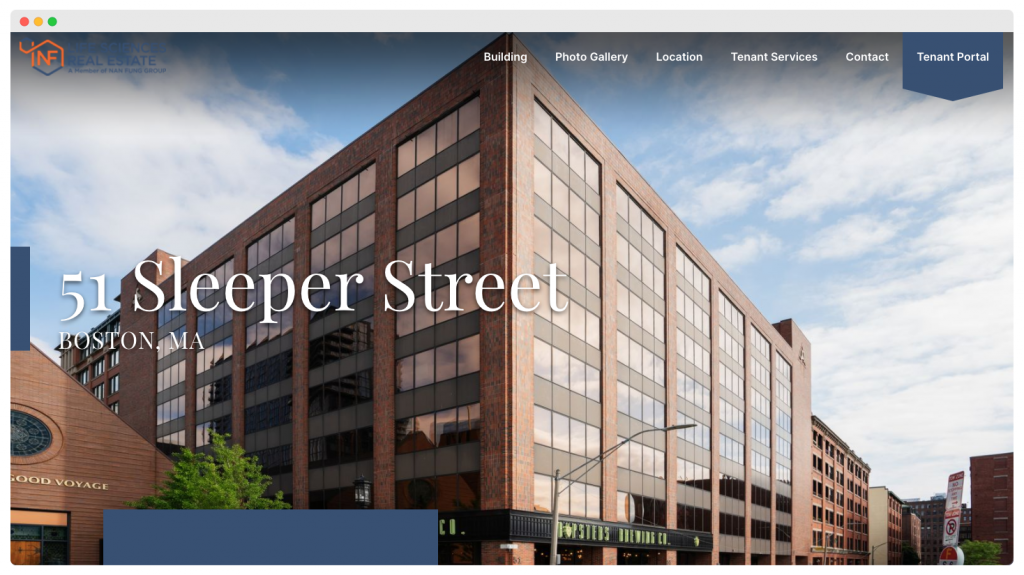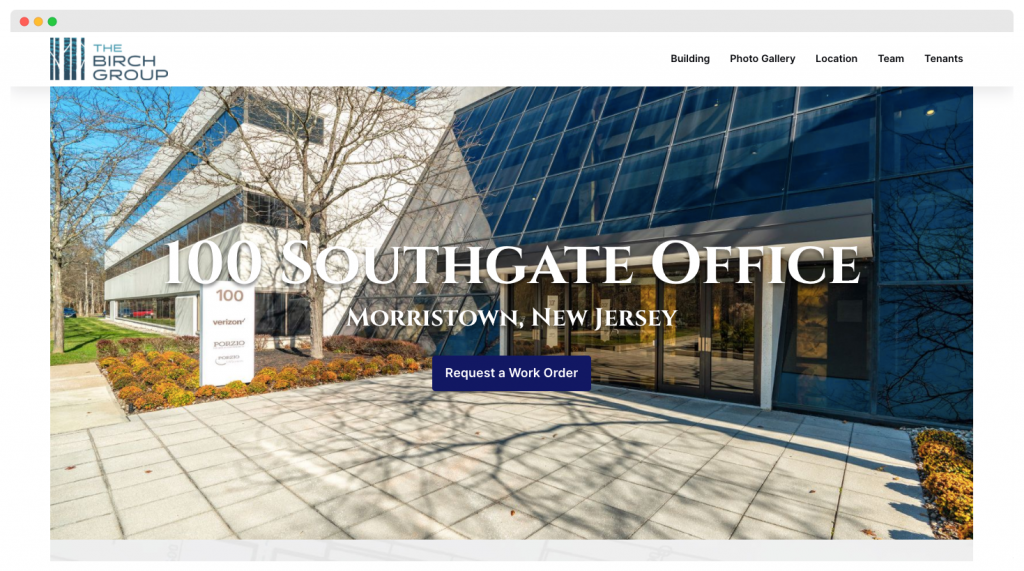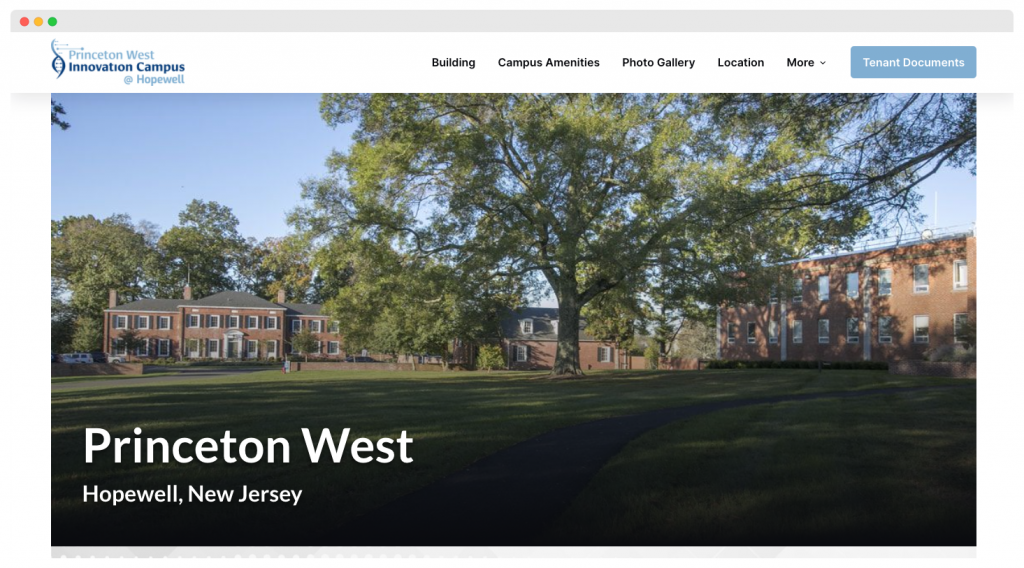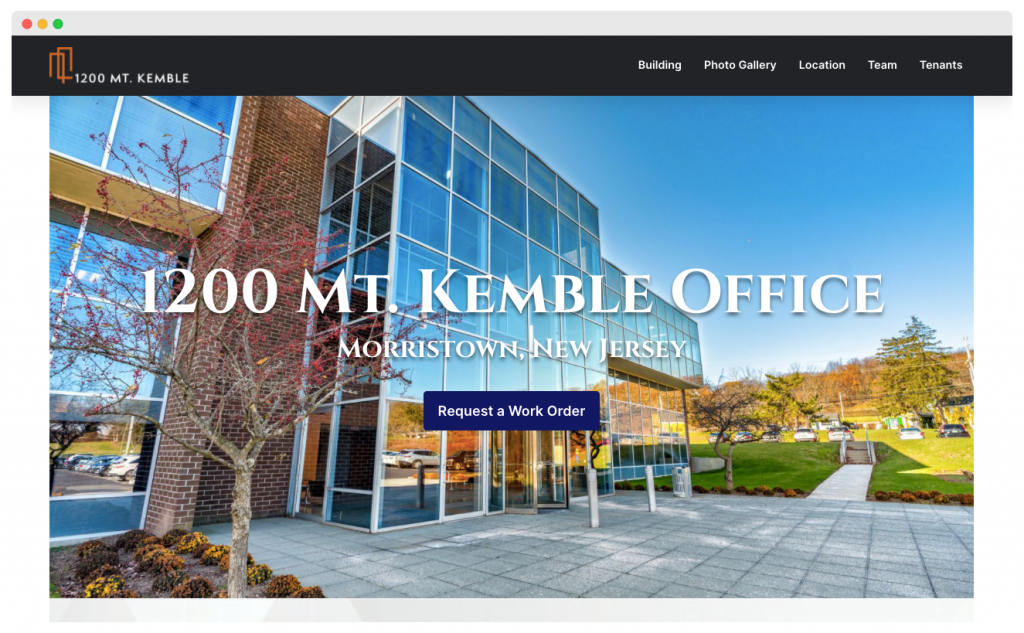It’s crucial for any commercial real estate property manager to have a digital platform that supports their physical operations, and that begins with an effective property management website design acting as a portal for all vital information and access to building services.
A property management website is the largest client-facing tool at your disposal. Here tenants can access every tool, service, and details they may need during day-to-day life. It is also an effective tool for work order requests, community announcements, maintenance information, and other building communications that may affect them.
Using digital tools like these instills a level of trust with tenants, as they have an open line of communication with your team and have 24-hour access to vital information.
Your property management website will be your leading platform for communication with property occupants; it is an aggregator of documents and a critical tool to maintain day-to-day operations. It is a digital space that must be curated thoughtfully to deliver a seamless digital experience that maximizes your core offerings.
Why You Need a Property Management Website
A property management website is the basis to make your services and information more accessible and should aim to answer all tenants most frequent questions.

It can be a powerful information hub to provide your tenants with relevant announcements, key building information, and help reinforce the amenities and services of your property.
Your tenants can find a list of tenant services and amenities, a calendar of building events, neighborhood amenities and points of interest, property management contact information, emergency contact information and any announcements surrounding activities at the property.
A comprehensive property management website should also highlight any services like cleaning or maintenance along with a work order system to request such services at a specific time or date.
All in all it is a valuable tool for maintaining your relationship with tenants and create a sense of community as here they will be able to stay up to date with upcoming community events and feel more rooted in their surroundings.
How to Build a Property Management Website
There are various ways to build a property management website; many companies hire a developer to create a custom website from scratch. However, this method is costly and can be a long process.
One of the most effective ways to build a digital platform is to rely on website building tools like WordPress. Property management WordPress website themes offer a considerable amount of customization and tools like SEO plugins to help drive online searches to your website.
The process can be further simplified by using pre-designed property management website templates that are ready to go.
Templates like these offer all the core formats needed to convey property information like pages designated for tenant services, a work order system, a document sharing portal, an information hub and more. This allows you to choose from various designs, all of which translate to both the mobile and desktop experience effortlessly.
Essential Elements Within a Property Management Website
Property management websites should follow design best practices and include essential information to provide the best user experience. These features should create efficiencies within your teams internally, whether for tenant management or when highlighting key features to new tenants.
Any property management website design should prioritize legible information and an easy user interface; however, here are the main elements a property management website should include:
Property Description – Arguably one of the most crucial bits of information, property descriptions should be front and center on your website. This allows tenants a clear understanding of what amenities and services are available on site. Here you can also feature rental spaces available for lease, including information like square footage, amenities, and tenure type. It is important to be thorough so that your properties are searchable and have a strong SEO presence.
Visuals – Photographs and graphics are an essential way to illustrate what facilities look like; no property management website is complete without it. This is important when enticing tenants but also as a way to convey information to existing tenants. Professional photos can capture a property’s best features, making it all the more enticing, while graphics are a great way to advertise announcements.
Integrated Work Order System – When managing a property, there will inevitably be a demand for repairs, maintenance and day to day tasks that need to be completed. Having an integrated system allows tenants to submit requests and helps your internal team keep track of these crucial tasks. This also gives operational teams an overview of which properties require more attention. Having a fully integrated system helps to save time and tackle issues more efficiently.
Document Portal – There are many crucial documents involved with onboarding new tenants and servicing existing ones. Having a portal where all your most important documents and forms are accessible helps to streamline communications and gives all parties access to critical legal documents, records, tenant handbooks and certificates at all times.
Tenant Directory – A tenant directory is a key form of social proof that allows potential and current tenants to see with whom they share a building. This is particularly useful for corporate clients in commercial spaces. Here you can include some general information about who they are and which areas they occupy.
Tenant Portal – A tenant portal connects tenants and property managers and can be accessed 24/7. It can incorporate several valuable features, like rental payments, a summary of previous requests they’ve made, access to digital copies of important documents, a form where tenants can report any maintenance issues and a support page. Property managers no longer have to wade through emails using this tool, as all information is neatly categorized. With more and more renters being millennials and Gen Z’s, technology-driven offerings like these are an attractive addition that offers greater convenience.
Tenant Services and Property Management Team Contact Information – Tenants need to know precisely what services are available. This is a chance to share any offerings at their disposal. Adding your contact information is also imperative for prospects to reach out for matters that cannot be handled within the tenant portal. This allows your company to feel more accessible and address any pressing needs.
Building Certifications – There are many different types of building certifications surrounding a property’s construction, safety, and green initiatives. These points are vital details that may interest tenants and provide a greater level of assurance. Obtaining such certificates and displaying them on your website is another valuable way to build confidence in your offerings.
Examples
Below are some of the best property websites that feature all the most effective practices for making an impressive and cohesive property management website. Not only do they contain all the relevant information, but these examples showcase how to create a website with a good user experience and how to best display resources.



